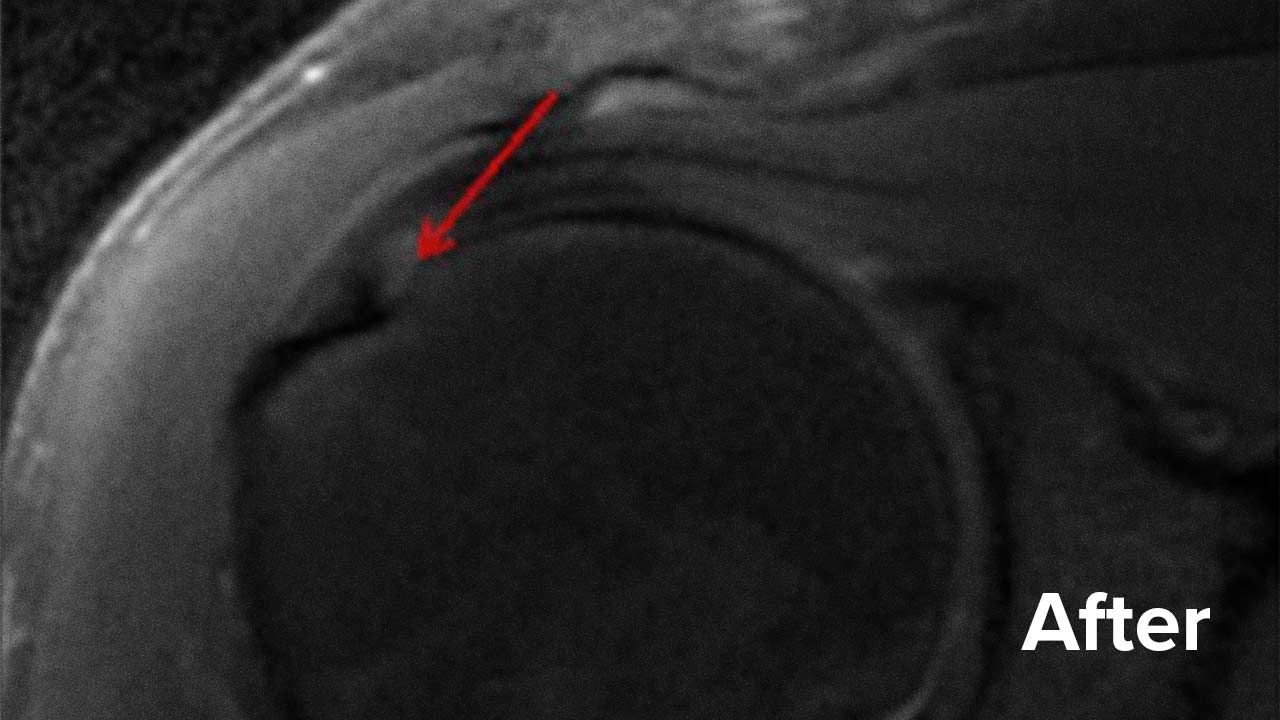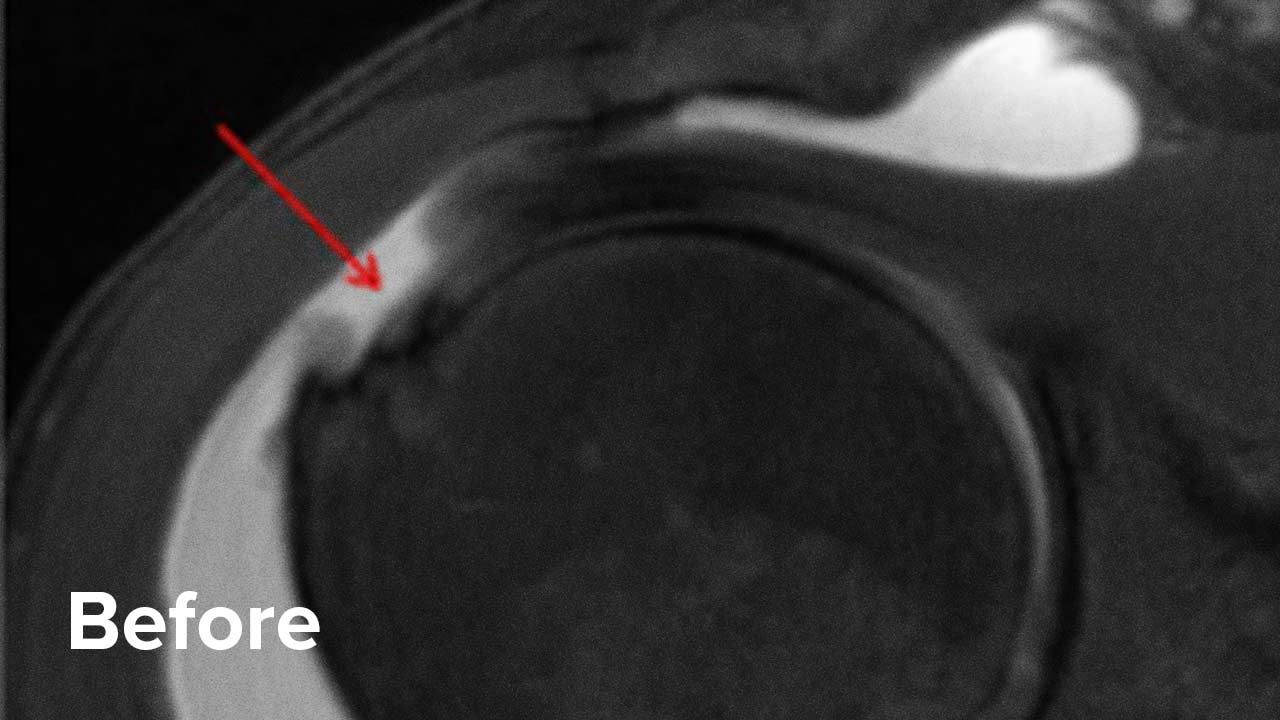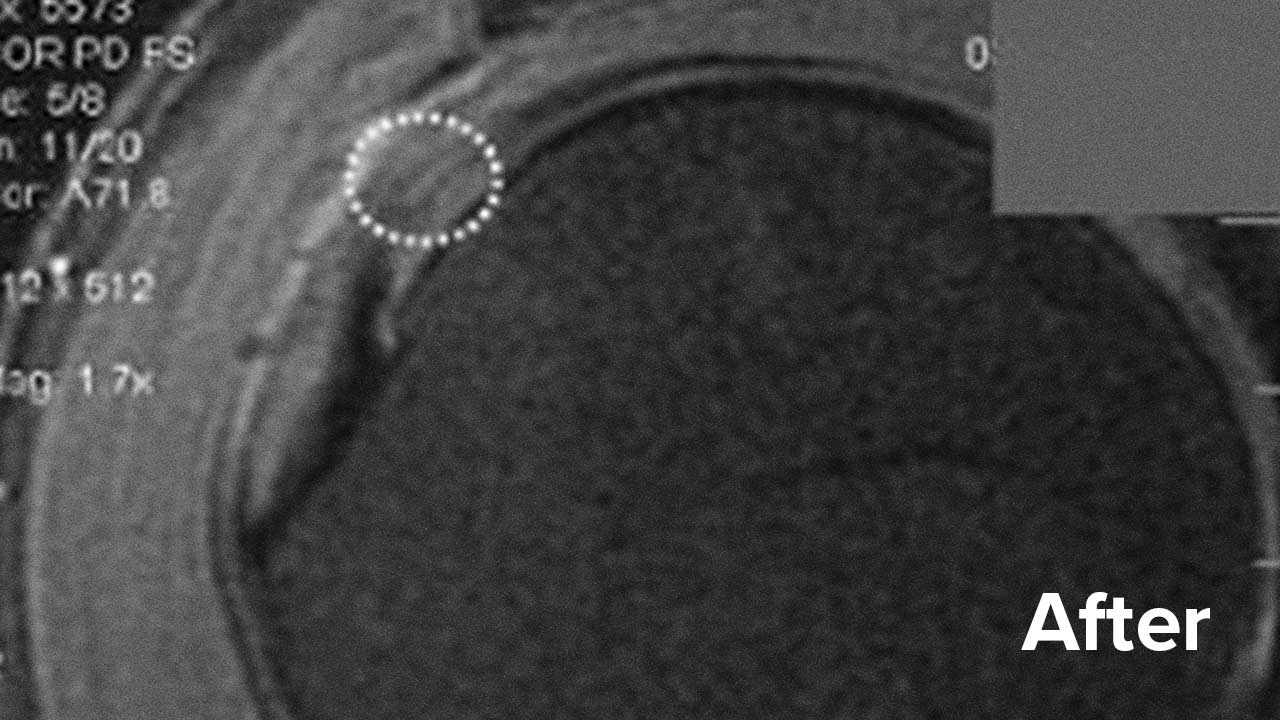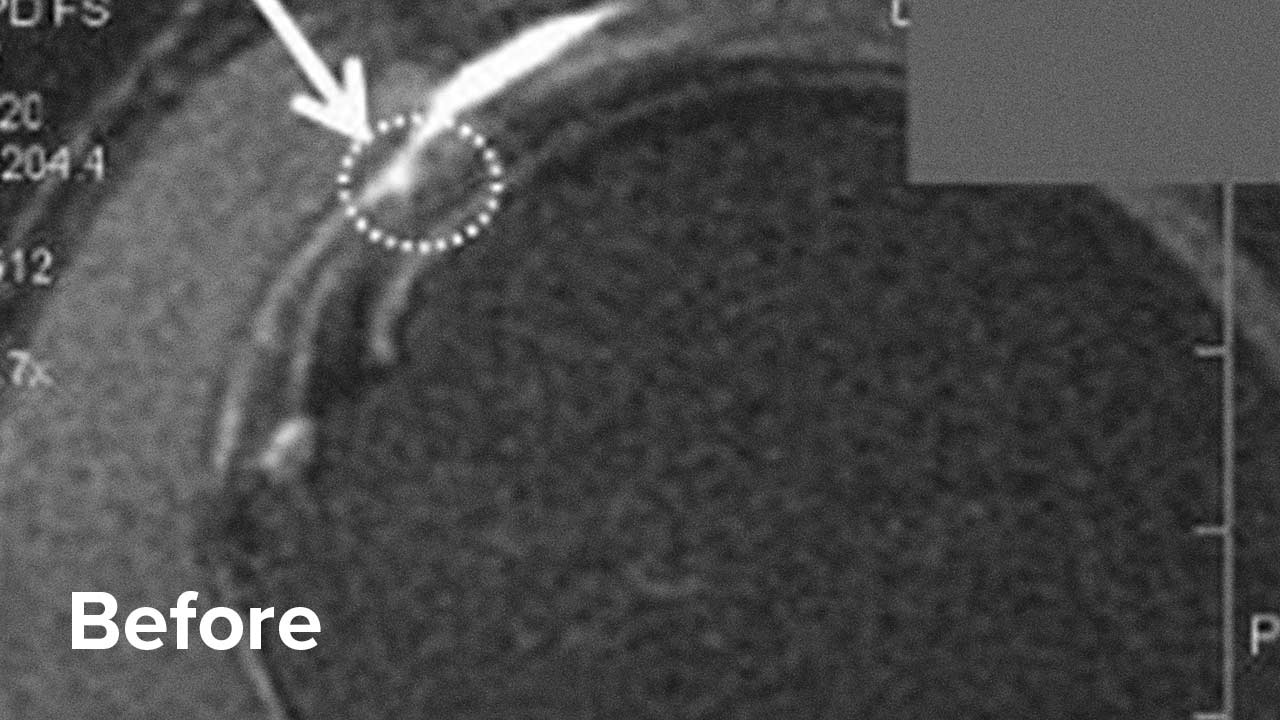Non-Surgical Rotator Cuff Tear Treatment In Broomfield, CO
Regenexx’s outpatient procedures use custom concentrations of your body’s natural healing agents to treat rotator cuff tears without surgery. Treatments use only your own blood to make super-concentrated platelet-rich plasma (PRP) or your own bone marrow concentrate (BMC), which contains stem cells.
Downtime is a fraction of what it is with surgery and generally requires little or no need for opioid pain medications or time off of work.
See ResultsRegenexx Alternative to Shoulder Surgery
Can A Rotator Cuff Heal Without Surgery?
In many cases, the answer is yes.
Physical therapy can promote improved blood supply and strengthen the muscles of the rotator cuff. A 2014 study determined that, upon one year of follow-up, physical therapy was equally effective to rotator cuff surgery in terms of regaining physical strength and range of motion in study participants (55 years of age or older).
Regenexx procedures can be a better alternative for people looking to avoid surgery, lengthy recovery, and overuse of prescription pain medication.
How Long Does It Take For A Torn Rotator Cuff To Heal Without Surgery?
Patients treated without surgery with Regenexx procedures usually return to their daily activities within two to five days. In comparison, rotator cuff surgery recovery time is extensive and can take anywhere from six months to a year to completely heal.
| Regenexx-SD* | Surgery | |
|---|---|---|
| Return to Daily Routine | 2 to 5 days | 6+ weeks |
| Return to Sports | 3 to 6 months | 1 year |
| Recovery | Brace, up to 6 weeks PT | Brace, extensive, no driving, 3 to 6 months PT |
| Pain Management | Mostly over-the-counter pain medication (days) | Prescription pain medication for weeks (weeks) |
| General Anesthesia | No | Yes |
| Keep Your Rotator Cuff | Yes | No |
*Bone marrow concentrate which contains stem cells.
403 Summit Blvd
Suite 201
Broomfield, CO 80021
Request an Appointment
Call to Schedule Schedule OnlineClinic Hours
| Sunday | Closed |
| Monday | 7AM–5PM |
| Tuesday | 7AM–5PM |
| Wednesday | 7AM–5PM |
| Thursday | 7AM–5PM |
| Friday | 7AM–5PM |
| Saturday | Closed |
Is Regenexx Right for Your Rotator Cuff Tear?
At Regenexx, we are dedicated to giving you the information you need to make an informed decision about your best treatment option.
During your initial appointment, your Regenexx doctor will use our four-part SANS (stability, articulation, neuromuscular, and symmetry) evaluation to identify the underlying causes of your pain. Your doctor will examine your injury through a full range of motion and may use ultrasound to observe the inner workings in real time.
This approach gives a more accurate picture of the root cause of your pain.
Am I a candidate?Watch Stine’s patient testimonial video and see how Regenexx helped her back to what she loves:
Note: Like all medical procedures, Regenexx procedures have success and failure rates. Not all patients will experience the same results. For more information on patients’ results visit our active national registry.
Regenexx for Rotator Cuff Tears: Patients’ Results
Take a look below at the outcomes of two of our patients who chose to have a Regenexx procedure for rotator cuff tear repair instead of surgery.
Scroll the arrow to the right to see the MRI of the rotator cuff before the treatment and to the left to see the outcome. The BEFORE shows a torn rotator cuff. The arrow points at a gap where the tendon should be. Once treated, the area will look like a dark band going diagonally, as seen on the AFTER.
Rotator cuff tear MRI – Patient 1
Rotator cuff tear MRI – Patient 2
Webinar: Treating Shoulder Pain Without Surgery

Join Chris Centeno, MD, founder of Regenexx, to learn how Regenexx procedures can help treat your rotator cuff without surgery and lead to a faster recovery.
During this free webinar you’ll learn:
- How procedures using bone marrow concentrate (BMC) and platelet-rich plasma (PRP) compare to surgery and other shoulder pain treatment options
- Procedure expectations
- Answers to the most common questions about regenerative medicine treatments
Frequently Asked Questions About Rotator Cuff Tears
The rotator cuff is a series of muscles and their tendons that surround the shoulder and help move the shoulder while supporting this ball in the socket joint. It’s made of several muscles and their tendons including the supraspinatus, infraspinatus, teres, and subscapularis. The tendons can become torn with trauma or wear and tear or both. This can cause pain and weakness in the shoulder and often an MRI or ultrasound image is used to make the diagnosis.
A rotator cuff tear is damage in the rotator cuff (the complex of muscles and tendons that make up the shoulder). These tears are classified based on whether they are partial (not completely through the tendon) or full-thickness (completely through the tendon). Full-thickness tears can also be either retracted (snapped back from the bone) or nonretracted (not snapped back from the bone), which is terminology you might see on the MRI.
People who have injured their rotator cuff will likely experience a number of common symptoms. They can include feeling pain when you lift or lower your arm, pain at night or while at rest, a crackling sensation when you move your shoulder in certain ways, and a general weakness when you rotate or lift your arm. If you have one or more of these symptoms, you may need to get your shoulder looked at.
Not always. Some people experience shoulder pain, and some do not. A rotator cuff injury can result in a dull ache and may worsen when extending the arm away from the body. Other symptoms can include a crackling sensation when you move your shoulder in certain directions, and a general weakness when you rotate or lift your arm.
Some people manage their symptoms and return to normal activities with physical therapy alone.
After rotator cuff surgery, not only is it common for many patients to still be in pain but oftentimes their full range of motion is also never realized. Research has shown that nearly 60% of these large rotator cuff surgical repairs actually fail, resulting in retears. In patients over 60 years of age who undergo surgical rotator cuff repair, 33% will fail to heal after one year. Additional surgery is often required.
Yes. Most rotator cuff tears occur because the tissue has become weak and unhealthy. For this reason, surgically repairing a tear may involve sewing damaged tissue together, which can result in very high retear rates (up to 79%) after surgery. Based on new research, rotator cuff tears are linked to a reduction in the natural number of functional stem cells in the tissue.
Without replenishing the stem cells needed for healing, the damaged tissue can’t repair itself with the same ability as when it was young and healthy. One recent study showed that the rotator cuff retear rates fell by half when stem cell injections were used after surgery.




